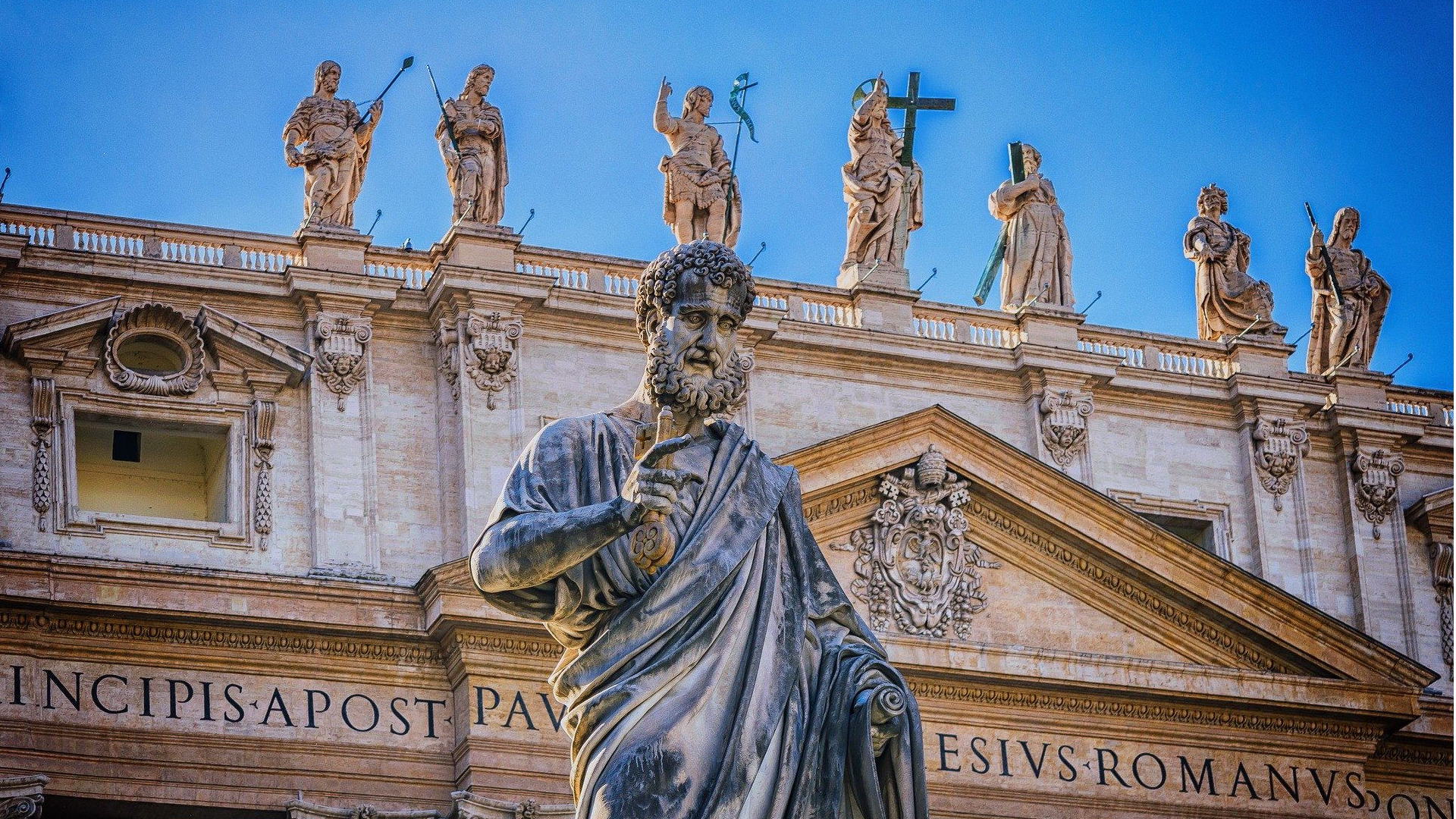
In addition to its monuments, palaces and churches, a city is also made up of the memories it evokes and the life that passes through it. A daily life that, in Rome, has always been marked by rites, holidays, anniversaries, celebrations: a full program of fixed events which, with their load of traditions, represented a (religious or civil) occasion for reflecting, meeting, sharing and having fun, season after season.
If some of them have not resisted the oblivion of time or have lost part of that sense of perfect wonder that they used to give to the Romans and to the many visitors of the city, others are still alive and kicking, even richer today than in the past. And some others, even if born in more recent years, are already part of the modern and contemporary “traditions” of the city.
To fully experience Rome and immerse yourself in its history, month by month we will present you some of the special days and moments of the city, the past and present one – the most heartfelt or awaited events, or even simply the most curious ones.
-
Festa della Repubblica - Republic Day, 2 June
-
St. Anthony and the Triumph of Strawberries, 13 June
-
Quinquatrus Minusculae, 13-15 June
-
St. John and the witches, 24 June
-
Saints Peter and Paul, 29 June
Festa della Repubblica - Republic Day, 2 June
On 2 June 1946, the institutional referendum held by universal suffrage, in which the Italian people were called to the polls to decide on the form of government, marked the birth of the Italian Republic. Rome is at the center of the celebrations: the ceremony of the event traditionally includes the deposition of a laurel wreath as a tribute to the Italian Unknown Soldier at the Altare della Patria by the President of the Italian Republic, in the presence of the highest offices of the State, and a military parade along Via dei Fori Imperiali. Among the most anticipated events are the spectacular passage of the Frecce Tricolori aircraft crossing the skies of Rome and the free opening of the Quirinale Gardens to the public. On the feast day, at the Palazzo del Quirinale, the Changing of the Guard with the Corazzieri Regiment and the Fanfare of the Carabinieri Cavalry Regiment in high uniform is carried out in solemn form: this solemn rite is only performed on two other occasions, during the celebrations of the Tricolour Day (7 January) and the National Unity and Armed Forces Day (4 November).
St. Anthony and the Triumph of Strawberries, 13 June
Today strawberries can be found almost any time of the year, but in the wild they ripen in late spring. Thus, their first appearance once provided the pretext for one of the many celebrations that cheered Romans. On 13 June, on the feast of St. Anthony of Padua, the Roman “fragolari” and “fragolare”, the strawberry growers and sellers in Rome and the nearby countryside, would gather in Campo de’ Fiori, each with their own basket of strawberries. Arranged in a huge basket or on carts, the strawberries were then carried in procession along with the statue of the saint. The merry procession would wind its way along the most crowded streets of the center, accompanied by the sound of tambourines, songs and stornelli folk poetry such as “Salutamo cor fischietto, Sant’Antonio benedetto, trullallero trullallà”, “Let’s greet with our whistles blessed St. Anthony, trullallero trullallà…”. In Rome the tradition of the Strawberry Triumph stopped in 1870 but was picked up by the village of Nemi. Here, since 1922, on the first Sunday in June the Strawberry Festival still celebrates this sweet and very famous seasonal fruit. And strawberries are still paraded bathed in strawberry wine....
Quinquatrus Minusculae, 13-15 June
Sacred to Minerva, the Quinquatrus celebrated on the Ides of June were called Minusculae or Minores to distinguish them from the more lavish ancient Rome’s festival of the Quinquatrus Maiores, celebrated from 19 to 23 March, during which the guilds of artisans and professionals paid homage to the goddess on the day believed to be her birth day. Goddess of just war, wisdom, creativity and useful arts, Minerva belonged to the elite of the Roman pantheon and her statue was worshipped in one of the cells of Jupiter’s temple on the Capitoline Hill. The goddess was credited with the invention of numbers, the loom, the chariot and various other things, including the double-barreled flute. And it was precisely the guild of flute players or tibicines that was the protagonist of the Quinquatrus Minusculae. The celebration is said to have been instituted in 311 BC, when the ruling censors had forbidden the flute players their customary sacred meal in the temple of Jupiter. The flautists then indignantly left the city, taking refuge in Tivoli, but their presence was required at all religious ceremonies in the city. Having failed the ways of diplomacy, it was finally decided to resort to a coup de grâce: the flute players were tricked into getting drunk and loaded onto a carriage that took them from Tivoli back to Rome, entering the city through the Porta Esquilina. To seal the new-found harmony, the flute players were allowed, among other things, to honor Minerva with a festival of their own: from that day on, every year, from 13 to 15 June, the flute players would cross the city wearing masks and long women’s stoles, reaching the temple of the goddess in procession.
St. John and the witches, 24 June
He is the only saint celebrated not only on the day of his martyrdom but also on the day of his birth, that is on 24 June, and his feast day was for centuries a fascinating interweaving of sacred and profane, religion and superstition. According to popular tradition, on the night of the in Rome witches would gather near the basilica dedicated to the saint, summoned by the ghosts of Herodias and Salome, to hoard souls. How to ward off the evil spirits? By the light of torches and lanterns, Romans arrived en masse at the Lateran to pray to the saint, but the atmosphere there was certainly not one of religious recollection. On the contrary, noise, tumult and unbridled merriment reigned on the square all night long. For good reason: the uproar, peppered with trumpets, horns, cowbells, tambourines and firecrackers of all kinds, was necessary to frighten the witches and prevent them from gathering herbs to use in the spells. And then, of course, there was drinking and eating in profusion: wine from the Roman Castelli served to digest the large pots of snails with sauce, brought from home or cooked on the spot, a dish with a strong allegorical flavor. Indeed, the snails’ horns symbolized discord and worries: eating them meant destroying adversity and reconciling with the world. At dawn, after the cannon shot from Castel Sant’Angelo signaled the end of the revelry, the pope would go to St. John’s to celebrate Mass, and from the basilica’s loggia he would throw gold and silver coins that would return to rouse the crowds. From the beginning of the 20th century, the festival took on more bourgeois characters and gradually began to lose its former importance: however, it lives again today in some events organized for the occasion.
Saints Peter and Paul, 29 June
It is said that their final farewell took place in Rome, a few hundred meters from where the Basilica of St. Paul Outside the Walls stands today, shortly before they suffered martyrdom, Peter crucified upside down at Caligula’s circus in the Vatican, Paul beheaded at the Acque Salvie. Patrons of the city and founders of the new Christian Rome, the two saints have always held great significance for the capital, and their feast, among the oldest in the liturgical year, was particularly rich and scenic. The culmination of all the religious rites was for centuries the gift of the “Chinea”, the very white horse offered to the pope by the king of the two Sicilies. The horse, skillfully trained, would depart with a procession of patricians, ambassadors and prelates from Colonna Palace in Piazza Santi Apostoli and arrive at St. Peter’s where it would kneel before the pontiff. The feast would end in glory with the “Girandola di Castel Sant’Angelo”, a great shower of colored fire, conceived by Michelangelo and perfected by Bernini, recounted by Charles Dickens, Belli’s sonnets and Piranesi’s prints. The custom was suspended in 1861 but was revived in 2006 and in subsequent years at Castel Sant'Angelo and on the Pincio Terraces. Among the rites still celebrated today are then that of the “pallium”, the white wool stole that the pontiff gives to some bishops as a symbol of the union between the universal and local churches, and the kissing of the foot of the bronze statue of St. Peter, adorned for the occasion with the red sacred vestment in the shape of a cloak. The festivities conclude at dusk with a procession accompanying the chain of St. Paul, a relic composed of 14 iron rings kept at the Ostiense basilica. A very long tradition behind it also has the historic “infiorata” flower carpet on Via della Conciliazione, with natural paintings made of flowers composed by more than a thousand master florists.
July in Rome. Key dates and events (today as in the past)
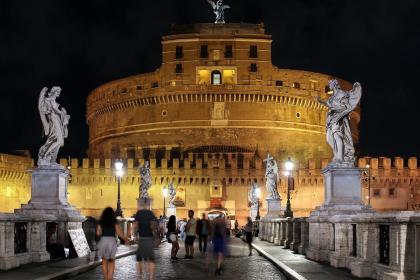
August in Rome. Key dates and events (today as in the past)
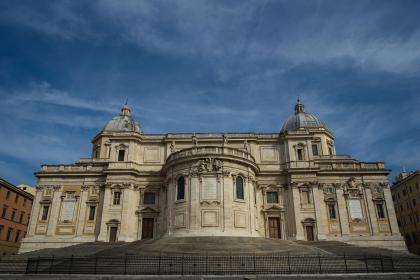
Monument to Vittorio Emanuele II (Vittoriano)
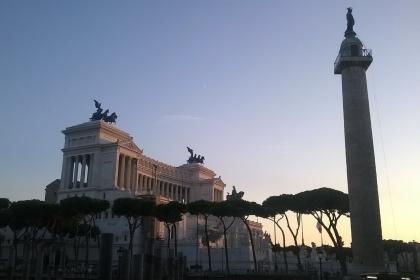
 Condividi
Condividi
The Quirinale Palace and square
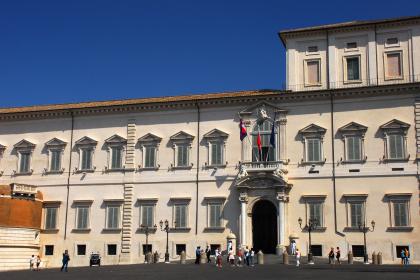
 Condividi
Condividi
Piazza Venezia
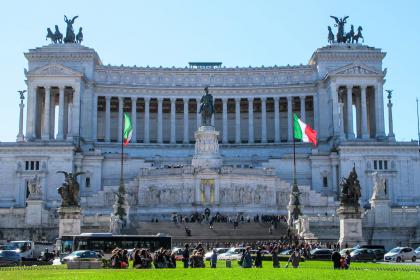
 Condividi
Condividi
Campo de’ Fiori
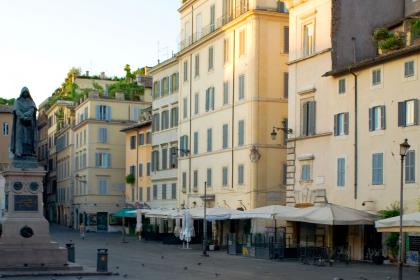
 Condividi
Condividi
Church of Sant'Antonio dei Portoghesi
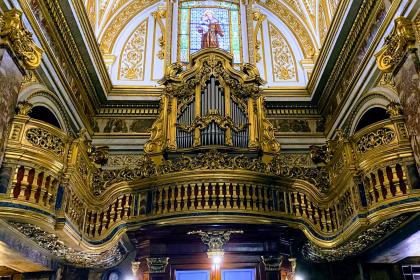
 Condividi
Condividi
The Basilica of St. John Lateran
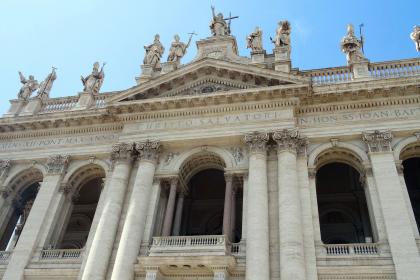
 Condividi
Condividi
Saint John and the Night of the Witches
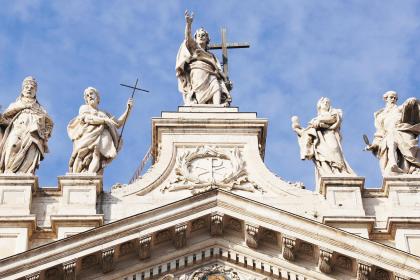
The legends and traditions of the night between 23 and 24 June
The Papal Basilica of St. Paul Outside the Walls
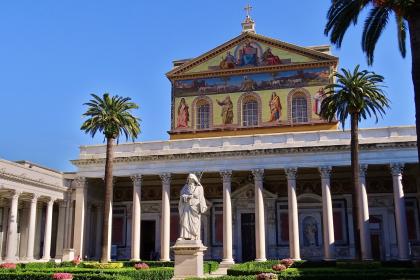
 Condividi
Condividi
The Basilica of St. Peter in the Vatican
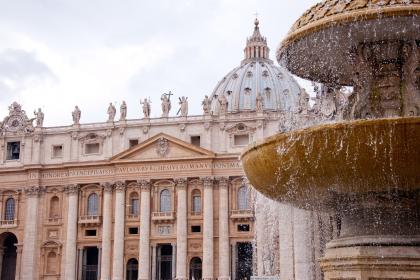
 Condividi
Condividi
The Pope’s pallium












































